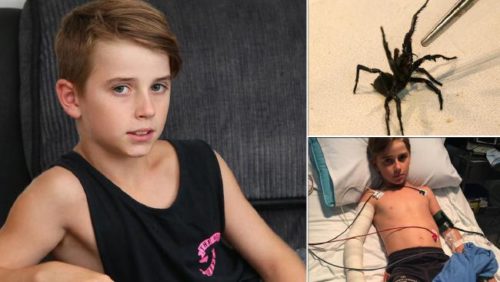Diagnosing and Treating Spider Bites in Children
It may surprise you, but spiders use their venom when they’ve decided they want to eat—not to scare you off your “tuffet”
If a spider rushes out of its hole when their web jiggles to only find something the size of a horse’s head stuck in it, almost none of them (in North America) are going to waste the effort. On the other hand, if something tries to poke it with a stick… all bets are off!
Australian 10 year old survives Funnel Web Spider bite
So, It seems to me, at least in my neck of the woods, instead of giving kids “tuffet jumping” lessons which makes them afraid of, and hateful toward, spiders—we’d be a lot further ahead by teaching them to be afraid of sticks.
Most spiders who have venom use it to get small prey to hold still long enough that they can eat it—and they do it quite well, ridding us of hundreds of such things every day. On the other hand, they are not above pumping all they’ve got into something which they consider is attacking, be it human or otherwise.
The good thing is: for humans at least and looking at the BIG picture, only few of the zillion bites each year are considered deadly or medically significant. A bad thing is: some spider bites do result in significant morbidity.
Of course nothing is absolute and the odd spider, it seems, is just plain hateful and deadly. In North America the “black widow” and the “brown recluse” are the only two with medically significant venom—Australia isn’t so lucky!
Spider Bites: New Information
Knowing More Makes It More Confusing
Another good thing for us and our kids is that spider bites are NOT like snake bites. Normally it is not a 911 call to summon an ambulance. Almost always you or your child will better off if you take a moment to breath, calm down and keep your wits.
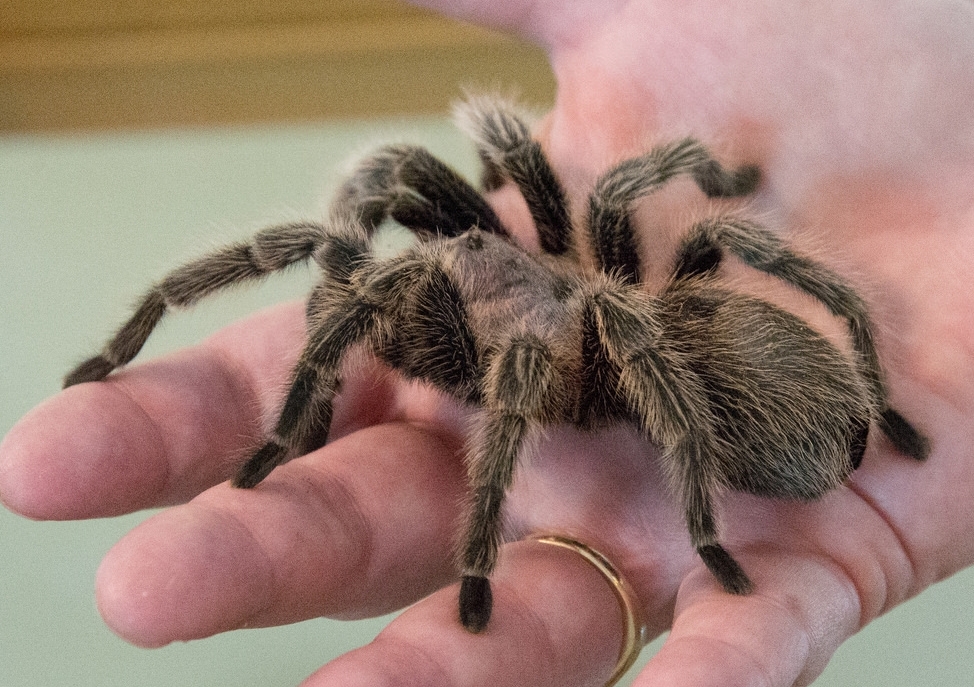
All the new information we’ve got in the past 20 years has taught us how incredibly more simple it is for us to treat a spider bite when we actually know “which spider it was that bit”; and how needlessly complex and prolonged it will be when we’ve got to just make guesses and “cover all bases!”
It really is worth the time and effort to talk about it, examine where you’ve been, get photo’s, try to find the spider and try to bring it in (or one like it)—either dead or alive. Even smashed parts of it will help.
Even if you have to send in the child with someone else while you stay and look for an ID and come later, it’ll pay off if you can even help narrow down the “guesses” just a little.
That’s my purpose in writing this article: to help you understand why and how identification makes treatment much more effective – and the consequences of not being able to ID the spider.
Doctors absolutely MUST do a thorough and complete physical exam and NOT make unwarranted assumptions in confirming a spider bite; because, many other causes are possible.
Think about these questions, then hover over the answer box to see which answer is correct (there is only one). Hover over underlined words to see their definitions. Click small photos to see larger versions.
Be Careful Jumping To Conclusions
Which of the following is accurate about the presentation of spider bites?
A: A wolf spider (family Lycosidae) bite is commonly associated with systemic effects and pain that manifests over a longer duration than most other bites;
B: Jumping spider (family Salticidae) bites are common but usually painless;
C: Tarantula (family Theraphosidae), gives a bite whose most common response is a local histamine response; or,
D: The hobo spider (Eratigena agrestis) is especially harmful to humans, with bites that cause necrosis.
Correct Answer: C — Tarantula bites are usually painful but not medically dangerous. Local histamine response with edema and erythema is the most common response. [shown above]
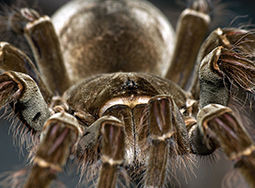 A: Wolf spiders are fast and agile. They often pounce on or chase after prey. Most species are harmless and run when threatened. A review of 45 confirmed wolf spider bites showed that individuals who received bites experienced pain of short duration, and systemic effects were rare.
A: Wolf spiders are fast and agile. They often pounce on or chase after prey. Most species are harmless and run when threatened. A review of 45 confirmed wolf spider bites showed that individuals who received bites experienced pain of short duration, and systemic effects were rare.
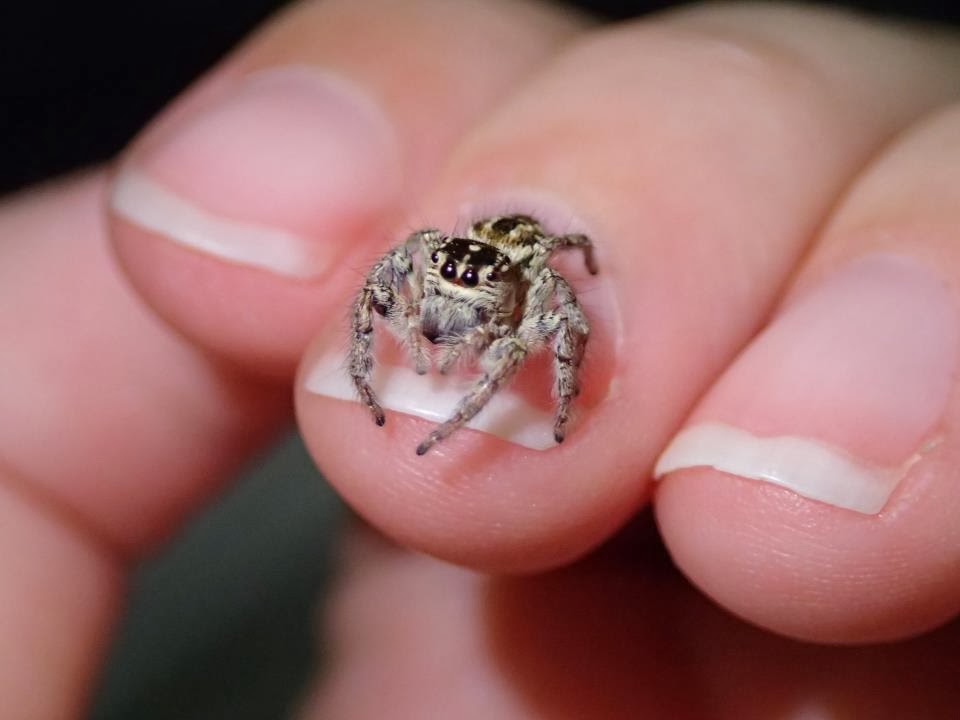 B: Jumping spider bites are rare. The spider more commonly chooses to escape rather than bite. However, when they occur, bites are painful, erythematous, and urticating.
B: Jumping spider bites are rare. The spider more commonly chooses to escape rather than bite. However, when they occur, bites are painful, erythematous, and urticating.
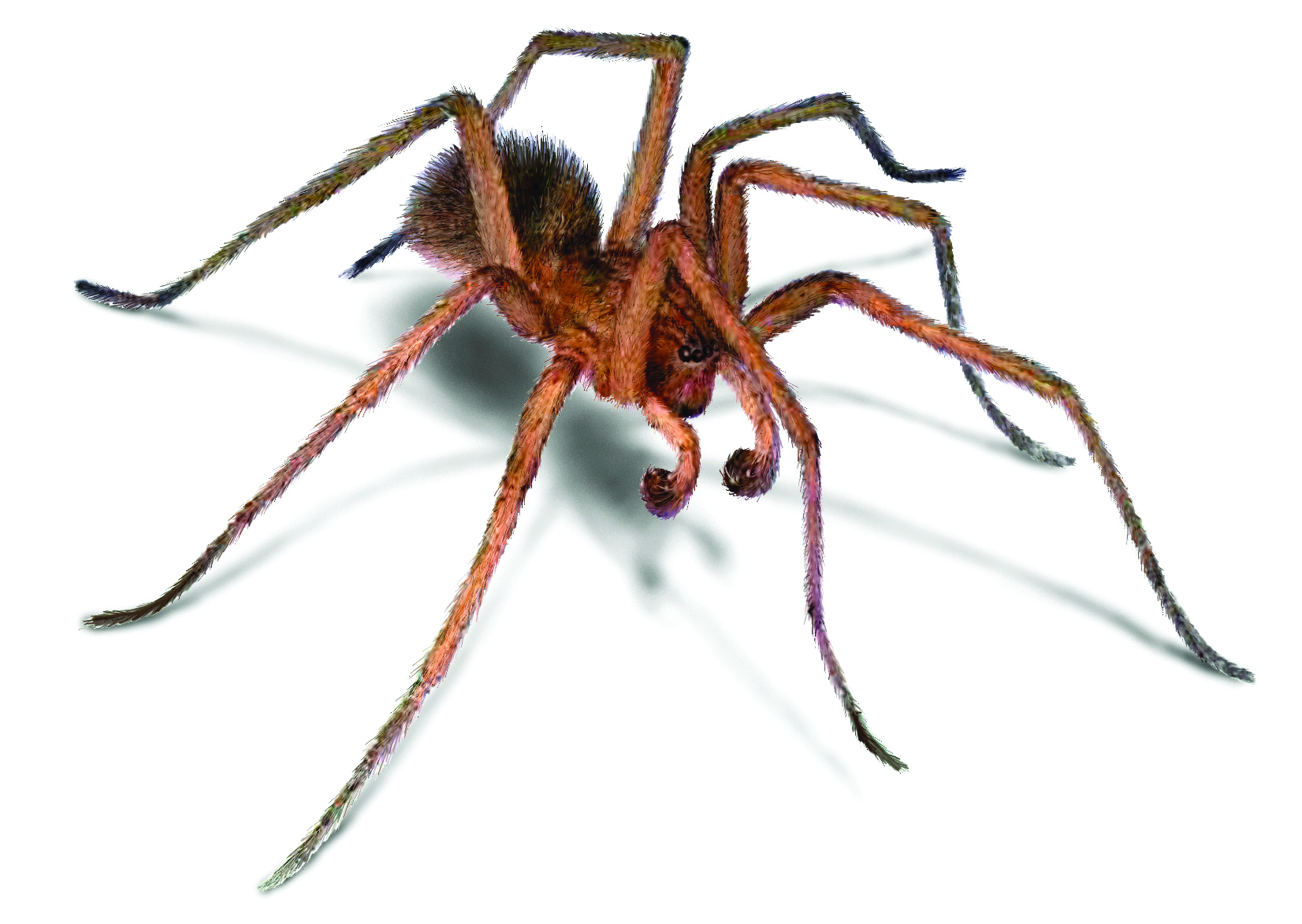 D: Although the hobo spider has a bad reputation, all research in the last 15 years suggests that these spiders are not harmful to humans.
D: Although the hobo spider has a bad reputation, all research in the last 15 years suggests that these spiders are not harmful to humans.
Like I mentioned, the Brown Recluse and Black Widow spiders are the only two in North America considered to have medically significant venom. We probably should know a bit about their symptoms and how to treat them.
Brown Recluse Spider Bite
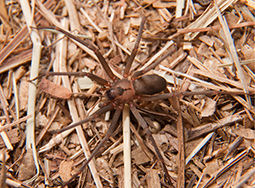
Which of the following is accurate about the presentation of a brown recluse (Loxosceles reclusa) spider bite?
A: There is immediate intense sensation;
B: Necrosis is more significant in the muscular areas of the arms, legs, and abdomen;
C: Symptoms of systemic Brown Recluse poisoning are related to the extent of local tissue reaction; or,
D: A single clear or hemorrhagic vesicle develops at the site after 24-72 hours, which later forms a dark eschar.
Correct Answer: D Edema around the ischemic bite site produces the appearance of an erythematous halo around the lesion. The red margin around the site continues to enlarge because of spread of the venom into the tissues. Typically, at 24-72 hours, a single clear or hemorrhagic vesicle develops at the site, which later forms a dark eschar.
A: Actually, envenomation from the brown recluse spider elicits minimal initial sensation and frequently goes unnoticed until several hours later, when the pain intensifies.
B: Necrosis is more significant in the fatty areas of the buttocks, thighs, and abdominal wall.
C: However, symptoms of systemic Brown Recluse Spider poisoning aren’t only related to local tissue reaction and also include: rash, fever, chills, nausea, vomiting, joint pain, hemolysis, disseminated intravascular coagulation, renal failure, seizures and coma.
The same goes for “widow spiders.” This was the feared spider of my youth. We were taught to be cautious around any spider web to make sure it didn’t contain a black one with a red hour glass on its “butt”—and I’ve seen many.
Now days I know that the colors can range into the browns and the red marking can be lots of different shapes in addition to the “hour-glass.”
Widow Spider Bites (Black and otherwise)
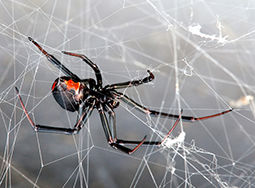
Which of the following statements is accurate about the presentation of widow spider (genus Lactrodectus) bites?
A: Cramping may extend from the local area around the bite to large muscle groups;
B: Hypotension and bradycardia are common after widow spider bites;
C: Systemic symptoms typically begin after 1-2 days; or,
D: Diaphoresis that occurs remotely from the site of suspected envenomation strongly suggests another cause and not a widow spider bite
Correct Answer: A—Muscle cramping may occur locally, around the area bitten and will probably extend into large muscle groups, such as the abdomen, back, chest, and thighs as well as to the smooth muscles such as bronchial or endometrial muscles.
B: Initial pain at the bite site is generally trivial and may go unnoticed. It is commonly described as a pinch or pinprick; however, infants may present with unexplained crying. Within about 1 hour, systemic symptoms begin and may last for a few days.
C: Abnormal vital signs may include high blood-pressure and tachycardia.
D: Sweating, locally, around the area bitten, or remotely from the site of envenomation, may occur.
Now, let’s give you an idea about what goes on in a doctor’s mind when a child with a spider bite rolls in the door. I don’t in any way expect that you would even understand any of these tests; BUT, I hope you can get a glimpse of WHY we ask you 30 different ways about what kind of spider it was or might have been!
Laboratory Workup of Spider Bites
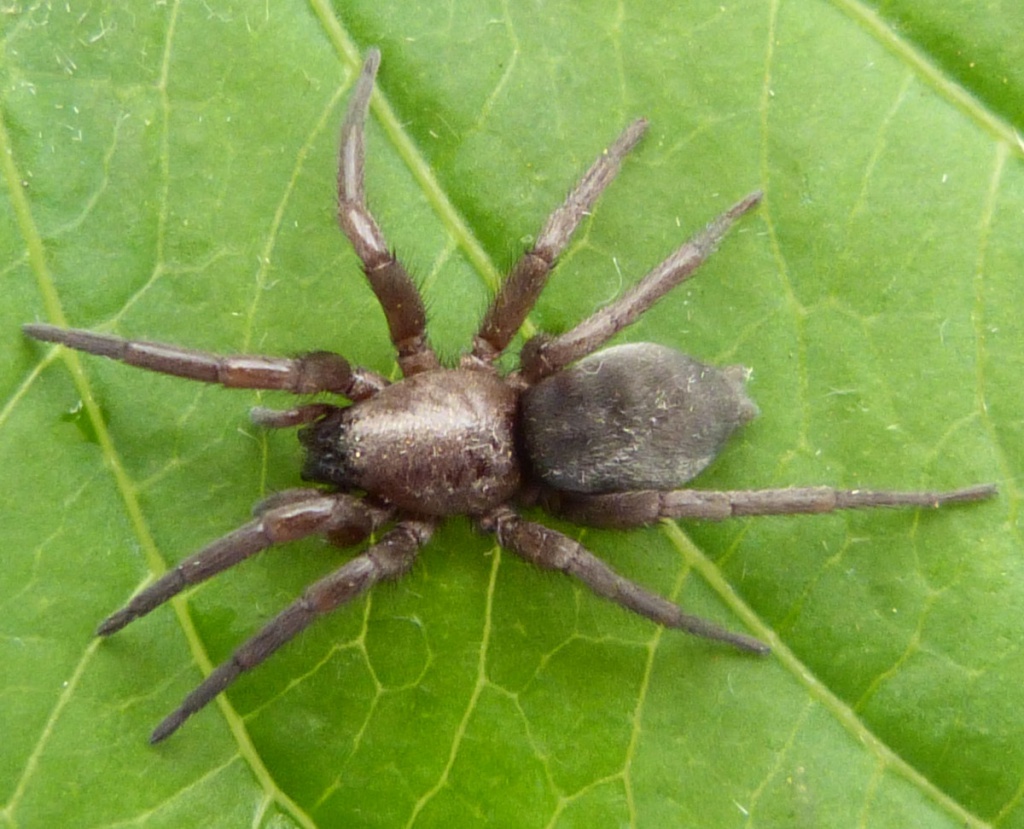
Which of the following is accurate about the workup of spider bites?
A: Obtaining a glucose-6-phosphate dehydrogenase level may be recommended in patients with brown recluse bites;
B: Patients with widow spider bites may have decreased serum creatinine kinase (CK) levels;
C: Laboratory studies (eg, glycophorin A measurement, complete blood cell count, peripheral white blood cell count) are used to confirm tarantula envenomation; or,
D: Although funnel-web spider (genera Hadronyche and Atrax) and mouse spider (genus Missulena) bites are often confused, funnel-web spider bites are often confirmed to be “dry” on laboratory findings
Only Correct answer: A—If treatment with dapsone is considered in a patient with a suspected brown recluse bite, obtain a glucose-6-phosphate dehydrogenase level before treatment.
B: In patients with widow spider bites, if the diagnosis is uncertain, laboratory studies (eg, complete blood cell count, pregnancy test, cardiac markers) to rule out alternative diagnoses (eg, acute abdomen, myocardial infarction) may be warranted. The serum CK and peripheral white blood cell count may be elevated.
C: No specific diagnostic studies, laboratory tests, or imaging studies are helpful in the evaluation and treatment of patients with injuries inflicted by tarantulas.
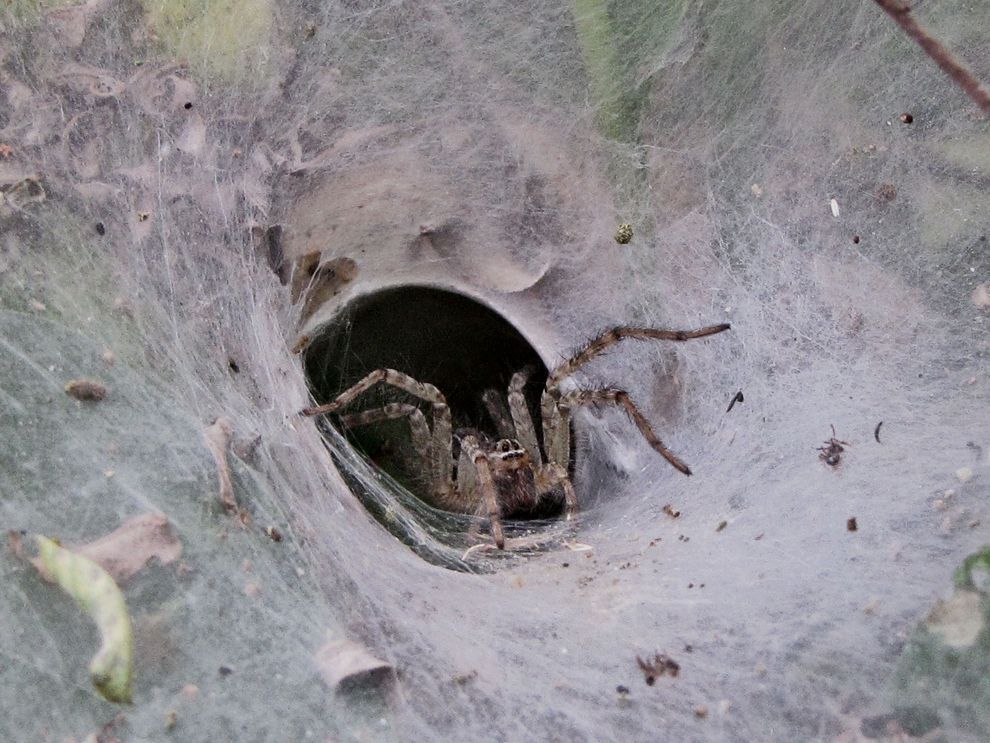 D: Absolutely not! Mouse spiders may sometimes be mistaken for funnel-web spiders ; but, if you live in an area where you need to worry about Funnel web spiders (like Australia) you darn well better make the effort to de-confuse yourself immediately–it’s the most deadly spider on earth! It’s the mouse spider which is more likely to produce dry bites without injection of venom—Funnel Web spiders almost always mean business and are never “dry.”
D: Absolutely not! Mouse spiders may sometimes be mistaken for funnel-web spiders ; but, if you live in an area where you need to worry about Funnel web spiders (like Australia) you darn well better make the effort to de-confuse yourself immediately–it’s the most deadly spider on earth! It’s the mouse spider which is more likely to produce dry bites without injection of venom—Funnel Web spiders almost always mean business and are never “dry.”
To press the point, all of the tests mentioned above are real and useful; but, they are expensive and have no absolutely no value when arbitrarily done for the bite of the wrong spider. Needing to randomly cast all over the place trying to find any test that works, sometimes makes me wonder who the kid thinks is the REAL enemy—the spider or the doctor?
And to drive the point a little further home, there are also great differences in the treatment between the varioius different spider bites which we need to think about. If we have no ID we have to cover as many bases as we can.
However, we can’t cover everything. First, because treatments may be opposite for one spider than the other (like compression bandages); and second, anti-venom ONLY works on one type of spider and none others. It is also extremely rare and expensive so those that have possession of it don’t want to part with it for mere guesses.
None of us find any satisfaction in waiting for symptoms to show up in order to get clues which spider it might have been that bit a kid so we can then decided how to treat and/or which anti-venom might be available.
Treatment of Spider Bites
Which of the following is accurate about the treatment of spider bites?
A: Pressure immobilization dressings are contraindicated in funnel-web spider bites;
B: As a general rule, antivenom should be administered in the field when a significant spider bite is suspected;
C: Hospitalization is generally indicated for patients with a history of hypertension who receive a widow spider bite; or,
D: Dapsone should be routinely administered to patients receiving brown recluse spider bites
Only Correct Answer: C—admission to the hospital is generally indicated after widow spider bite for the following patients (subject to clinical judgment):
•Severely symptomatic children
•Pregnant women
•Patients with a history of hypertension or heart disease
•Patients with intractable pain and contraindications to antivenom
•Patients with unusual complications of envenomation
•Patients who develop anaphylaxis to antivenom
A: Treatment of funnel-web spider bites involves immediate application of a pressure immobilization dressing as quickly as possible to limit lymphatic venom migration, followed by medical care.
B: Giving antivenom in the field is NOT done routine because of the risk for severe allergic complications. Under very special circumstances where both the patient’s history and the type and risk of spider bites is known and considered probable, arrangements and procedure protocols may be considered.
D: Dapsone, because of its leukocyte-inhibiting properties, frequently has been recommended by authorities to treat local lesions. However, because of the potential for adverse effects associated with dapsone use, appropriate caution should be exercised if using this medication. To date, no well-controlled studies have shown dapsone to affect clinical outcome in human brown recluse envenomations; therefore, it is not routinely recommended.
Of all the spiders in North America, only two produce bites of medical significance but it’s important not to miss those. Identification of the spider is critical if we want to avoid over-treatment, complications and wastage of valuable anti-serum.
Advertisement by Google
(sorry, only few pages have ads)

